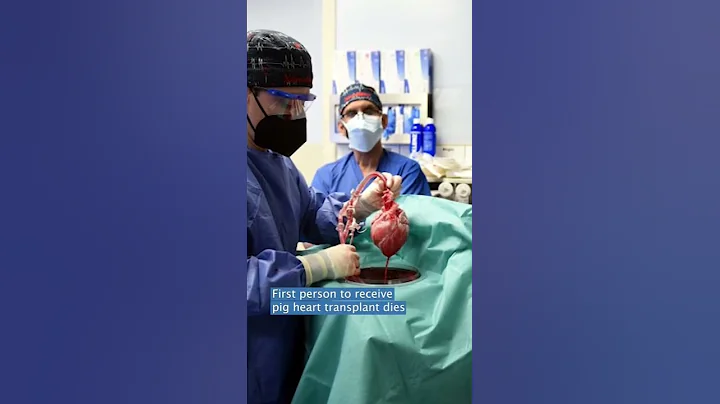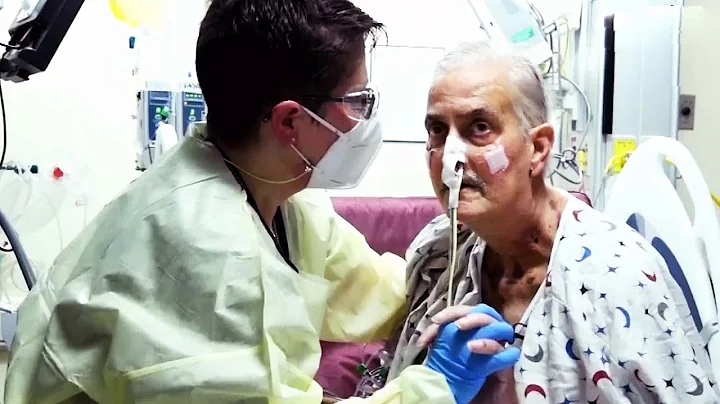Mingmin from Ao Fei Si
Qubit | Public account QbitAI
A few months after the death of the first pig heart transplant patient, the investigation into the cause of his death continues. Whether
is related to rejection reaction has become the focus of everyone's attention.
Recently, the New England Journal of Medicine published a paper revealing more details before and after the surgery.
The paper shows that the weight of the patient's heart almost doubled after death, from 328 grams to 600 grams. Fibrotic tissue appeared in the heart of
, accompanied by extravasation of red blood cells.

△In Figure B, the patient’s heart is enlarged
At the same time, the doctor also found human herpes virus (HHV-6) in the patient’s lungs. The virus
can cross-react with porcine cytomegalovirus detected in transplanted hearts; it is also related to xenograft rejection.
However, researchers also said that the abnormalities in the patient's heart are not consistent with typical rejection reactions caused by organ transplants.
However, it is still not possible to prove whether the patient died of viral infection.
The weight of the heart increased from 328 grams to 600 grams
This paper disclosed in detail the details of the patient before and after the transplant, including the condition of the transplanted heart, the patient's own health and postoperative medication.

The autopsy results found that there was indeed a big problem with the transplanted heart. The most obvious phenomenon of
is that the weight of the heart has almost doubled. The doctor explained that this was mainly due to signs of leakage in the blood vessels.
At the same time, some signs of myocardial fibrosis also appeared.
Generally speaking, myocardial fibrosis is a reaction after myocardial necrosis, and this reaction is irreversible. This phenomenon occurs in the late stages of many heart diseases.
However, the researchers emphasized that these problems are not consistent with the typical rejection of allogeneic organ transplants.

Another question that people are very concerned about - whether the transplanted heart carries the virus is also answered in detail in this paper.
According to reports, the pig heart that had been edited with gene and only carried the porcine endogenous retroviruses PERV-A and PERV-B before transplantation. PERV-C, porcine cytomegalovirus and porcine cytomegalovirus were not detected. Lymphotropic herpesvirus.
As for why low levels of porcine cytomegalovirus were detected in the patient’s blood 20 days after surgery, the paper still does not provide an explanation.
At that time, as the level of porcine cytomegalovirus in the blood increased, doctors used the treatment originally used for AIDS patients with cytomegalovirus infection, and also injected human immunoglobulins into the patients to enhance their resistance.
Subsequently, the patient's physical condition improved and he was even able to get out of bed 48 days after the operation.
But immediately after, his condition took a turn for the worse. Tests revealed that the heart wall of the transplanted heart was abnormally hypertrophic, the ventricular volume was reduced, and the level of antibodies against pig tissue in his body was also rising.
Doctors believe that this may be due to the phenomenon of antibody-mediated atypical immune rejection .
Finally, 60 days after transplantation, the patient died due to excessive heart damage.
One More Thing
With the completion of the first pig heart transplant operation, the attention of all walks of life on xenogeneic organ transplantation is also increasing.
Although it can alleviate the current shortage of organ transplant donors, it also brings many risks and worries.
"Immune rejection", "cross-species biosafety", and "social ethics" have become several major issues of general concern in academia and society.
And the other direction - 3D printing organ , may also be worthy of our attention.
Recently, the world's first 3D printed ear transplant operation was completed.
A 20-year-old Mexican girl successfully received a transplantable left ear using a 3D printed collagen hydrogel scaffold and cartilage tissue grown with her own cells.

And because the surgery uses your own cells, the probability of rejection will be reduced.
This surgery was supported by 3DBio Therapeutics, an American regenerative medicine company.
According to its executives, they will also try to print other body parts in the future, such as spines, noses, etc.
Paper address:
https://www.nejm.org/doi/pdf/10.1056/NEJMoa2201422
—End—
Qubits QbitAI · Toutiao signed
Follow us and learn about cutting-edge technology trends





















